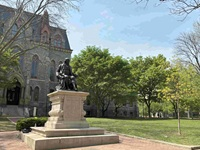Speaker
Description
Next-generation pixel sensors will be sufficiently fine-grained, both in space and time, to determine kinematic properties of a traversing particle by analyzing the resulting charge cluster in a single layer of silicon. Customized machine learning (ML) models based on mixture density networks are capable of extracting track angles and hit positions, as well as uncertainties on these quantities. We compare the performance of ML models of varying complexity and evaluate the promise of each for implementation in hardware. The minimal set of track parameters calculated on-ASIC is sufficiently small to send to the lowest-level hardware trigger of a collider experiment at 40 MHz, promising improvements in physics analyses that are currently limited by this trigger acceptance.

